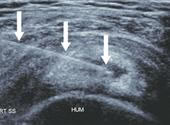|
PRP improves patient outcomes by enhancing the body's normal healing process.
Platelet Rich Plasma therapy (also referred to as PRP) is an exciting new technique to speed the healing and recuperation of injured, damaged or diseased tissues. It naturally magnifies and concentrates the body's own healing process to help resolve even difficult and stubborn foot and ankle ailments and injuries.
Unlike cortisone injections which can depress the healing process and often only temporalily masks symptoms, PRP enhances and stimulates healing.
Elite athletes and professional sports teams have relied on PRP therapy for years. It is now available to everyone.
What is PRP therapy be used for?
- Achilles and other tendon inflammations, injury or scar tissue
- Ligament and joint sprains, strains and residual weakness
- Plantar fasciitis, heel, arch or mid-foot pain
- Joint damage, arthritis and degeneration
- Slowly healing trauma, wounds or surgeries of all types
How is PRP prepared?

| A small amount of blood is drawn from the patient's arm (like taking a blood test) |
A specially designed high speed centrifuge seperates the blood into its component elements |
The portion of blood containing the "platelet rich plasma" has concentrated growth and healing factors which when returned into damaged or injured tissues enhances and speeds the healing of these tissues |
 The enriched PRP fluid is carefully injected into and around the diseased or damaged tissue using ultrasound images to visualize the placement. Local anesthesia is utilized during this injection so the patient experiences minimal discomfort. Following the injection, patients rest for a few days allowing the treatment to begin working. Gradually over the next few weeks and months healing progresses. The enriched PRP fluid is carefully injected into and around the diseased or damaged tissue using ultrasound images to visualize the placement. Local anesthesia is utilized during this injection so the patient experiences minimal discomfort. Following the injection, patients rest for a few days allowing the treatment to begin working. Gradually over the next few weeks and months healing progresses.
Common Questions
I've heard of "Cortisone Shots" Is this the same?
Studies have shown that cortisone injections may actually weaken tissue. They may provide a quick fix, offer temporary relief and lessening of inflammation, but the doctor can only do them a few times in any area because of this tissue weakening effects. They do not generally provide long term healing. PRP therapy provides healing and strengthening of these tendons and ligaments.
Does insurance pay for PRP?
As this treatment is newer technology, insurance coverage varies from plan to plan. Since PRP is often an alternative to painful, disabling and expensive surgery , the costs are relatively low. As it is performed the office there are no costly hospital charges and treatment is affordable to most everyone.
Are there any special requirements after treatment?
A removable walking boot may be dispensed to rest the treated area. Initially there may be some localized soreness and discomfort. Most patients only require some extra-strength Tylenol to help with this. Ice and heat may also be applied to the area as needed. Patients can usually return to their usual daily activities immediately, but strenuous activity or exercise may be limited for a few weeks.
Is PRP right for me?
If you have a foot or ankle injury, inflammation or degeneration and traditional methods have not provided relief, PRP therapy may be the solution. The procedure is less aggressive and less expensive than surgery. It will heal tissue with minimal or no scarring and alleviates further degeneration of the tissues. Schedule an evaluation with Moulton Podiatry Group to see if PRP therapy is right for you.
» Back to Top

|